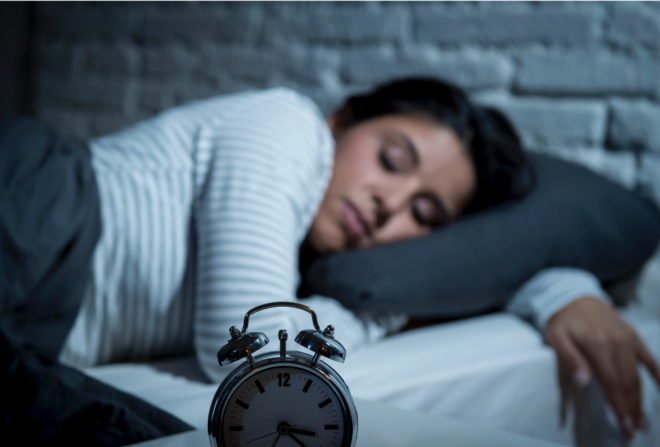What constitutes a good night sleep may not be so clear when it comes to what the brain is doing. Simple interpretations of function based on gross spectral characteristics of the EEG fall short.
A good night’s sleep is considered one that is long enough, not troubled by frequent waking and without excessive movement. But sleep itself is still a little elusive. Many questions remain about its function both in its own right, and in relation to the off-line processing of what occurred during wakefulness. Why do we need it? What exactly is going on in our brains? Sleep is thought to allow the brain to rest from stimulus so that it can enable cellular housekeeping and also sort out and consolidate memories from the day. How do we know what aspects ensure those things are done well?
Sleep stages
Sleep has been characterized based on measures that relate to our physical behavior – muscle tone and movement, eye movement, and our breathing rates and heart beat as well as based on the behavior of the EEG signal. Based on this two “types” of sleep have been defined – non-rapid eye movement sleep (NREM) and rapid-eye movement sleep (REM sleep) that appear in cyclical fashion through the night. As you can guess this definition is largely based on eye movement but are correlated with other factors as well.
When we are awake our EEG typically displays lower amplitude, higher frequency EEG activity, and higher muscle tone. As we fall into NREM sleep the EEG becomes characterized by higher amplitude, lower frequency waveforms (predominantly in the theta and delta range) and decreased muscle tone. NREM sleep is sometimes further subdivided into successive stages (e.g. N1, N2, N3) based on differences in the spectral characteristics of the signal. For example N2 are phases that show sleep spindles and K-complexes while N3 is what you might consider to be “deep” or “slow wave” sleep. REM sleep displays a similar EEG pattern to waking – low amplitude and higher frequency EEG activity – but is associated with muscle atonia (complete loss of muscle tone) and rapid movements of the eyes. These complex neural dynamics that are observed on the scalp reflect an array of neurochemical processes which are going on deeper inside the brain to orchestrate the transition and maintenance of sleep.
Image from Brown et al 2012 https://www.ncbi.nlm.nih.gov/pmc/articles/pmid/22811426/
Making memories in slow waves
What is the role of sleep in memory consolidation? One particular research focus has been on the role of NREM slow wave sleep. For example, in a 2006 Nature study, Lisa Marshall and Jan Born from the University of Lübeck, found that transcranial stimulation at 0.75Hz during NREM sleep, an intervention which led to an increase in oscillating slow waves, had the effect of boosting memory performance the following morning (for stimuli they had learnt the previous evening). More recently Helfrich et al from Berkeley have shown that it is isn’t just the slow waves that are important in memory consolidation, but more specifically it might be the coupling between slow wave oscillations and sleep spindles during NREM sleep. Furthermore the authors suggest that the uncoupling of these two neural features, especially over prefrontal regions, may in part explain the memory decline that is often observed in older adults.
Dreaming in REM
Then there is also REM sleep. Traditionally REM sleep has been associated with dreaming. The theory has been that dreaming allows the reactivation and reorganization of memory networks thereby helping in some way to maintain or consolidate their existence. However recent research has shown that it isn’t as simple as assigning the function of dreaming to a spectral pattern. For example, in a study published in the journal Nature Neuroscience in 2017, Giulio Tononi’s lab at University of Wisconsin asked participants to spend the night in their sleep lab. During the night they woke up their participants several times regardless of what phase of sleep they were in. At each awakening they asked the participants about their “mental activity” immediate prior to being woken. This demonstrated that the recollection of dreaming didn’t exclusively belong to REM sleep, but also occurs in NREM sleep as well. Although the numbers of participants in the studies was relatively low (especially in experiment 2 and 3 where there was only 7 participants in each), the overall number of awakening was relatively high. By comparing the awakenings that had been immediately preceded by a remembered dream experience vs no dreaming experience, they were able to reveal that dreaming, or at least the memory of dreaming, occurs both within REM and NREM sleep.
Furthermore, they found that it was associated with an increase in high frequency power and a decrease in low frequency power over parietal-occipital regions prior to the awakening irrespective of whether the awakening was in REM or NREM.
Beyond sleep stages
Although dividing sleep into individual stages is a useful shorthand way for depicting the progression of sleep during the night, it is showing itself to be an oversimplification of the complex interplay between the different patterns of oscillations which underpin sleep and the many active and passive housekeeping functions that are going on whilst our conscious mind is momentarily unplugged. It is not yet obvious how they translate into what the brain needs for achieving what is sees as “a good night’s sleep”.
















